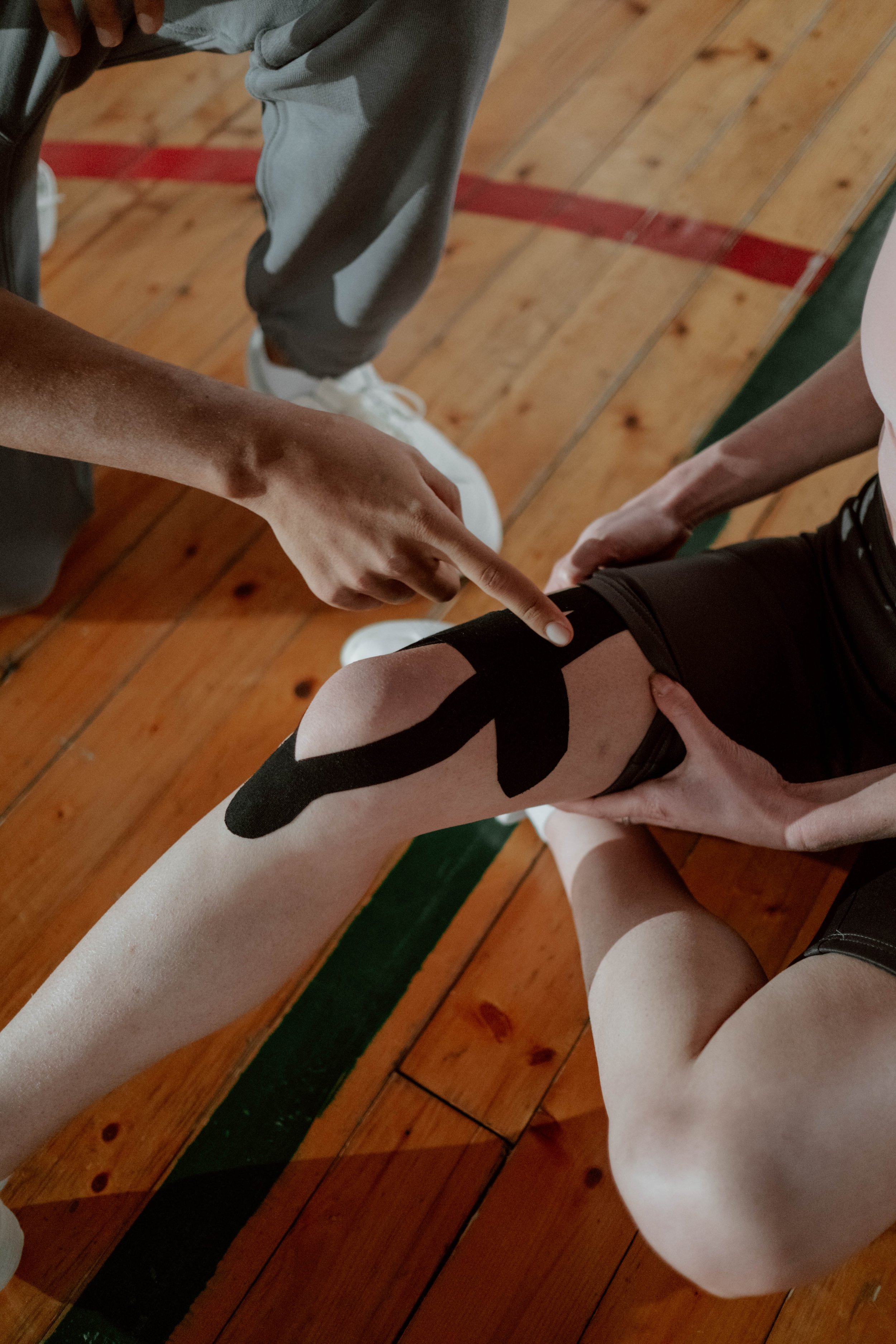Acute Knee Pain From Jumping Sports or Running?
Do you experience pain in your knee when you jump, run or play sports? This may be a sign of patellar tendinopathy, a common condition that affects the tendon that connects the kneecap to the shinbone. It is often referred to as jumper's knee and can be classified as acute or chronic depending on the duration and severity of symptoms. In this blog post, we will explore the signs, symptoms, causes, diagnosis, and treatment options for patellar tendinopathy.
Causes and Risk Factors
Here are some common risk factors that increase the likelihood of developing patellar tendinopathy:
Overuse: Repetitive jumping, running, or other high-impact activities can put a lot of stress on the patellar tendon, leading to microtrauma that can eventually result in tendinopathy.
Muscle Imbalance: Weakness in the quadriceps or tightness in the hamstrings can place increased strain on the patellar tendon, leading to injury.
Poor Training: Lack of proper training, overtraining, or rapid increases in training intensity can increase the risk of developing patellar tendinopathy.
Biomechanical Issues: Abnormal alignment of the lower extremities, such as knock-knees or flat feet, can place increased stress on the patellar tendon.
Symptoms
The symptoms of patellar tendinopathy include pain, stiffness, swelling, and tenderness. These symptoms may vary in severity but often occur just below the kneecap.
Pain: Pain is typically felt just below the kneecap and can be sharp or dull. Pain may increase during activity and decrease with rest.
Stiffness: The knee may feel stiff, especially after periods of inactivity.
Swelling: Swelling around the patellar tendon may be present.
Tenderness: The patellar tendon may be tender to the touch.
Diagnosis
If you are experiencing symptoms of patellar tendinopathy, it is important to see a healthcare professional for an accurate diagnosis. Your healthcare provider will likely perform a physical exam to assess your knee's range of motion, strength, and stability. They may also order imaging tests, such as an X-ray or MRI, to evaluate the severity of the condition.
Treatment Options
Treatment options for patellar tendinopathy depend on the severity of the condition. The following are some common treatment options for patellar tendinopathy:
Rest: Resting the affected knee and avoiding activities that cause pain can help reduce symptoms.
Physical Therapy: A physical therapist can develop an exercise program to strengthen the quadriceps and improve flexibility in the hamstrings, which can help alleviate pain and prevent future injury.
Non-Steroidal Anti-Inflammatory Drugs (NSAIDs): Over-the-counter NSAIDs, such as ibuprofen or naproxen, can help reduce pain and inflammation.
Extracorporeal Shockwave Therapy (ESWT): ESWT involves the use of high-energy sound waves to stimulate healing in the affected tendon.
Platelet-Rich Plasma (PRP) Therapy: PRP therapy involves the injection of concentrated platelets into the affected tendon, which can help stimulate healing.
Surgery: In severe cases of patellar tendinopathy, surgery may be necessary to repair the tendon or remove damaged tissue.
What type do you have?
Acute Patellar Tendinopathy
Acute patellar tendinopathy is characterized by sudden pain in the knee that is typically associated with activities such as jumping or running. Treatment for acute patellar tendinopathy typically involves rest, ice, and elevation of the affected knee.
Chronic Patellar Tendinopathy
Chronic patellar tendinopathy is a long-term condition that can develop over time as a result of repeated stress to the patellar tendon. Treatment for chronic patellar tendinopathy may involve a combination of rest, physical therapy, and medication.
Prevention and Management
The best way to prevent patellar tendinopathy is to avoid overuse of the knee joint and to maintain proper strength and flexibility in the muscles surrounding the knee. This can be achieved through a combination of exercise, stretching, and proper rest and recovery. Seeking medical attention is important to determine the best course of treatment. Ignoring the symptoms can lead to further damage to the patellar tendon and can potentially result in long-term complications.
Conclusion
Patellar tendinopathy is a common condition that affects many individuals. Recognizing the symptoms and seeking medical attention can help prevent further damage to the patellar tendon. By maintaining proper strength and flexibility in the muscles surrounding the knee and avoiding overuse, patellar tendinopathy can be prevented.
If you're struggling with pain or mobility issues, don't hesitate to schedule an appointment with our experienced therapists today. We're here to help you get back to your best self and achieve your health and fitness goals.
// MOVING TOWARDS WELLNESS //


